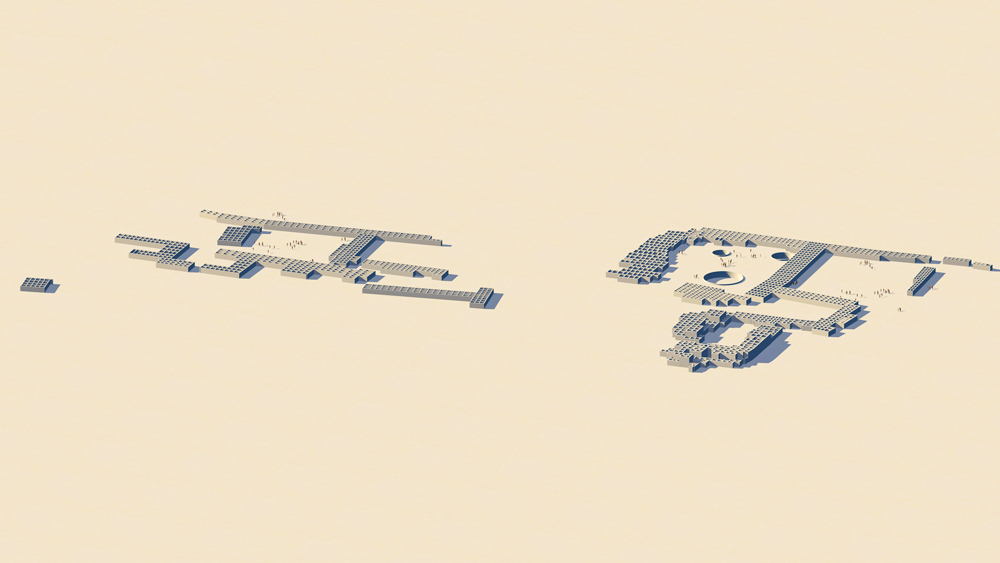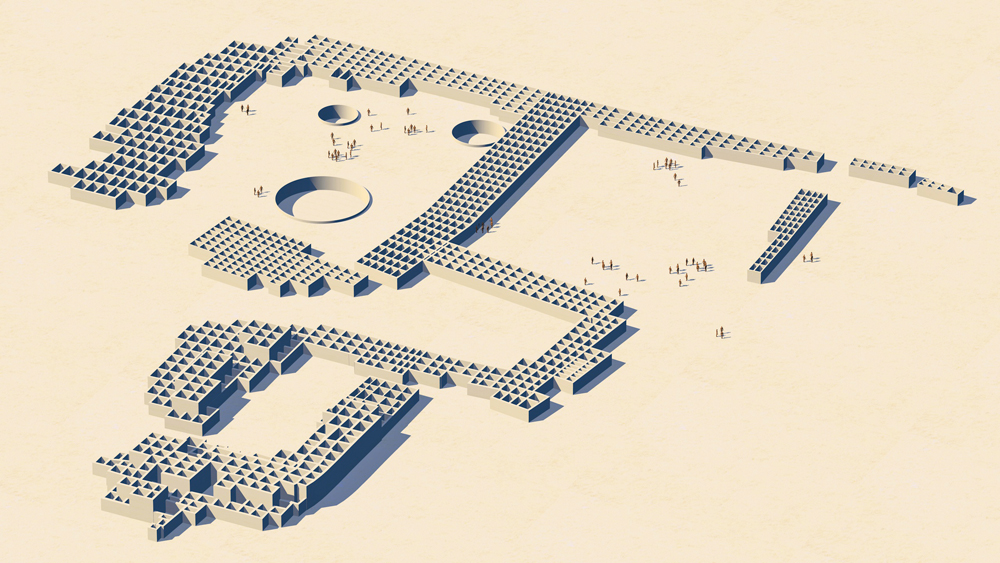Paa-ko ("root of the cottonwood tree") Pueblo

Nels Nilson 1914 site survey of Paa-ko Pueblo

Photomontage of Paa-ko Pueblo CG model over aerial photo of actual site, looking east toward Monte Largo.
Paa-ko Pueblo, a large Classic Ancestral pueblo and a historic-period pueblo located at the eastern base of the Sandia Mountains, approximately 1 mile north of the town of San Antonio (Bernalillo County). The site sits on the western shore of the San Pedro Creek which flows to Tonque Arroyo to enter the Rio Grande at San Felipe Pueblo. Paa-ko Pueblo is believed to have been occupied from the beginning of the 1200s CE, with pause in the occupation in the 1400s CE. It was abandoned during the late 1600s CE. Adolph Bandelier first documented Paa-ko in a 1892 report, which described portions of mounds with heights indicating that the original buildings would have been more than two stories in height. Paa-ko consists of two roomblocks situated on the south and north sides of an east-northeast flowing drainage. N.C. Nelson excavated portions of both room blocks in 1914. In the mid-1930's extensive excavations of over 200 rooms were conducted by Edgar Lee Hewett and Marjorie Lambert of the School of American Researchs. Paa-ko was occupied as early as the 1200s CE as evidenced by excavation of Santa Fe Black-on-white, Galisteo Black-on-white, and Wiyo Black-on-white ceramics. The abandonment of the pueblo sometime in the 1400s CE, was verified with the discovery of Rio Grande Glazeware ceramics. Abandonmrent was due to warfare, according to Lambert, and he suggests Athapaskan attacks. The site was later reoccupied after 1525 CE as evidenced by the occurrence of Glaze IV–VI (Glaze D–F) ceramics found. Paa-ko is important to contemporary Santa Ana Pueblo, as a way point in its migrations.
Elevation is 1946 meters (6384 feet) above sea level.
Coordinates: 35°12'00.9"N 106°18'52.3"W
35.200245, -106.314535
Materials of construction: The earliest rooms at Paa-ko were built of coursed masonry, while the later additions were either stone masonry or a combination of stone masonry and adobe








Data for CG model:
1. Lambert, Marjorie F., 1954. Paa-ko Archaeological Chronicls of an Indian Village in North Central New Mexico. School of American Research, Monograph 19, Santa Fe, 1954
